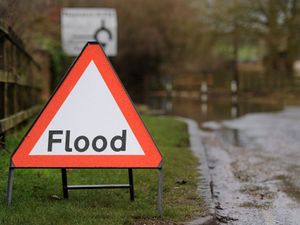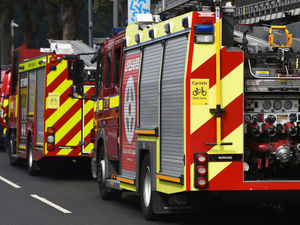Why more young guns are turning to shooting
We only met half an hour earlier, but already Cyril Brewster has already spotted my weak left eye.
"You might be left-handed, but I want you to hold the gun in your right hand," he says.
One thing you have to say about Cyril, the clay-pigeon instructor at Millride Country Sports in Essington, near Wolverhampton, is that he certainly knows his guns.
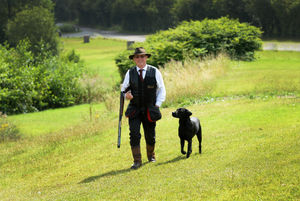
Accompanied by Toby, his faithful black labrador, Cyril looks the classic country gent as he wanders around the vast hidden shooting ground and fishery in the shadow of the M54.
The 67-year-old has been involved in the sport for most of his life, so perhaps it is no surprise that he likens clay-pigeon shooting to catching a ball.
"It's all about LSD – line, speed and distance," he says.
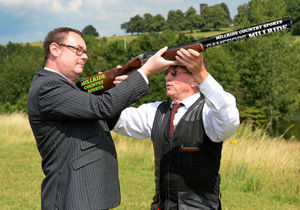
"Catching a ball is something you do learn to do when you are young, and after a bit it is something that you do naturally.
"The only difference between catching a ball and shooting a clay pigeon is that when you catch a ball you extend your hand, whereas when you are shooting you use the gun.
"It is my job to match you with a gun that is like an extension of your hand."
Cyril, who has had country sports businesses at Patshull Park in Pattingham, in Shifnal and Stoke-on-Trent, retired eight years ago. But his love of the sport proved too strong, and he was recently persuaded to come out of retirement to provide clay pigeon lessons at Millride.
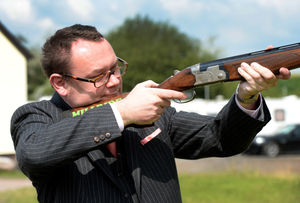
He says the 'have a go' experience sessions, where anybody can try their hand at the sport for just £30, have exceeded all expectations.
"We have had 40 people turning up on a Saturday, and then 30 turning up on a Sunday," he says.
"For some of them, it will just be a one-off experience, but others might find they enjoy it and want to come back."
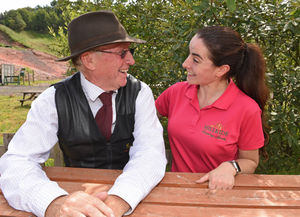
For those who want to take it more seriously, Cyril provides one-to-one tuition, which is all about fine tuning the technique. But he says most people have it within themselves to be a competition shooter.
There seems to be a broad cross-section of experience during our sunny weekday afternoon visit to Millride.
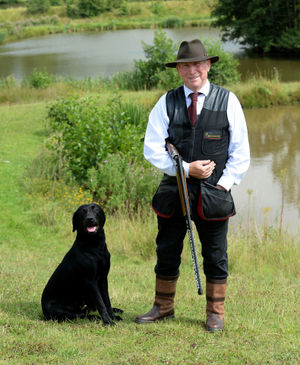
Paul Gormley, 39, from Wall Heath, near Dudley, is shooting the clays with his son Rhys, 15.
Paul, an aircraft technician with the RAF, said he had been interested in shooting since serving in the army.
Rhys, who has been shooting for about a year, says: "I really enjoy it, it's all about hitting something, it's the challenge of hitting a moving target."

Jacky Matthews, 52, from Church Eaton, near Stafford, is a relative veteran at the sport, having been doing it for about 10 years.
"It's just good fun," she says. "It's definitely becoming more popular."
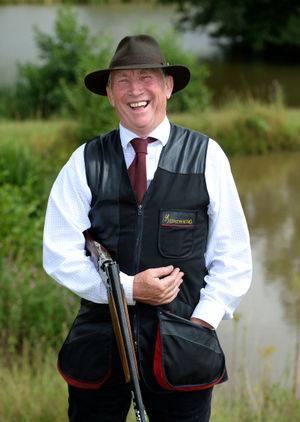
Retired police officer Gwyn Bevan, 60, from Albrighton, is a qualified clay pigeon shooting coach who has been doing the sport for half a century.
He says part of the enjoyment is that you do not need a sparring partner to compete with.
"You are competing against the targets, trying to improve your technique."
He says the success of the British Olympic shooting team has led to a lot more interest in the sport.
"When I was a youngster, there weren't so many shooting grounds about," he says.
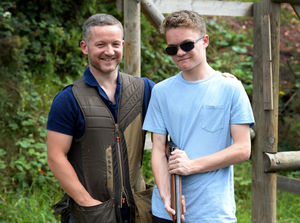
"A lot of people come along for an experience day, and then take it up more seriously."
And while Cyril is something of a veteran in the country sports industry, the site is now managed by 29-year-old Joanne Rowe, whose father Robert founded the business with Cyril back in the late 1980s.
"I have been involved with the business since I was 16, and I have been more involved with the fishing and shooting side over the past four years," she says.
"I think the fact that I am quite young can help in getting younger people to relate to the sport."
Cyril believes that not only has the appeal of the sport broadened over the past few years, but the nature of how people take part is also changing. In years to come he believes fewer people will own their own guns, but more will take part in the sport on an ad hoc basis, turning up to shooting ranges and using the guns there.
After a lifetime in country sports, he is irritated by celebrities such as television naturalist Chris Packham who have called for a ban on driven grouse shooting. Earlier this year Mr Packham was part of an action which resulted in Natural England revoking three general licences which allowed the shooting of 16 species of bird, including crows, magpies, Canada geese and feral and wood pigeons.
Cyril believes many of these objections come from misguided assumptions which do not recognise the role that country sports play in nature conservation.
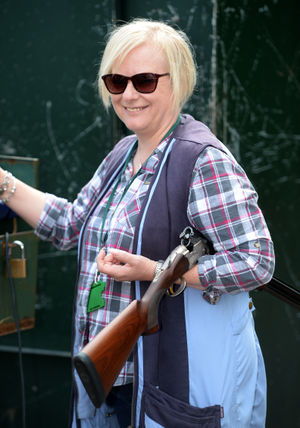
"I adore songbirds," he says. "People like Packham say they want more raptors, but if you don't control the predators, then the small country birds will be gone.
"Country sports play a massive role in the conservation of the countryside and wildlife.
"Shooting people love wildlife."
Back on the range, after a couple of wild misses, I quickly get the hang of hitting the clays. Like Cyril says, it is beginning to come naturally – for a while. Then he spots the errors starting to creep in.
"Don't overthink it," he says after my first miss in a while. "Don't start looking down the barrel of the gun, or anything like that."
And he's right. Forgetting about technique I just point and shoot. Bullseye! Cyril beams with pride. Like he says, it's just like catching a ball.


